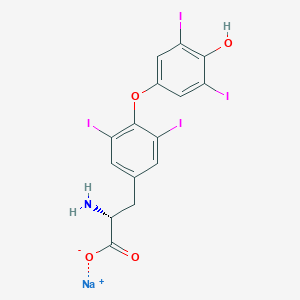-
Categories
-
Pharmaceutical Intermediates
-
Active Pharmaceutical Ingredients
-
Food Additives
- Industrial Coatings
- Agrochemicals
- Dyes and Pigments
- Surfactant
- Flavors and Fragrances
- Chemical Reagents
- Catalyst and Auxiliary
- Natural Products
- Inorganic Chemistry
-
Organic Chemistry
-
Biochemical Engineering
- Analytical Chemistry
- Cosmetic Ingredient
-
Pharmaceutical Intermediates
Promotion
ECHEMI Mall
Wholesale
Weekly Price
Exhibition
News
-
Trade Service
Fei Zhangjun, a professor at the Tomato ,tomatoes now have no childhood taste. Scientists around the world have worked hard to make tomatoes more delicious.
in the long history of human domestication and cultivation, from the wild species of ancestors gradually become "excellent" cultivation. However, due to artificial selection, the genetic diversity of cultivated species has decreased significantly compared to that of wild ancestors, and unfortunately, some of the genes responsible for "flavor" have disappeared. It is important to excavate and enrich the genetic resources of tomatoes, and to "resurrection" the lost genes.
recently, a team of professors at Cornell University in the United States and Professor James Giovannoni team worked together to build a pan-genome of cultivated tomatoes and their next of kin, mapping nearly 5,000 previously unretained genes. What's more, a "rare" variant of the TomLoxC gene, which gives tomatoes a good smell and taste, has been discovered, helping to uncover genetic resources associated with the importance of tomatoes and scientifically guiding tomato improvement and breeding. The results were published recently in Nature Genetics.is one of the world's largest consumers of vegetables and fruits, with total world production of 182 million tons in 2017, worth more than $60 billion, according to the United Nations Food and Agriculture Organization. Tomatoes are the second largest edible vegetable after potatoes in the United States. In China, it is not only the "main character" of delicious food, but also the fresh fruit of summer, its flavor and quality are favored.
genome is the "key" to the mysteries of life, but it usually comes from a particular individual and can only be used as a reference for other organisms within the same species.
2012, scientists measured the world's first tomato reference genome, revealing about 35,000 genes and facilitating crop improvement research. Currently, researchers have sequenced the genomes of hundreds of wild and cultivated tomatoes and identified areas of the genome that have changed significantly during the domestication and improvement of tomatoes.
" these genome sequences accumulate a wealth of data resources, but all analyses are based on a match with the reference genome sequence, which results in the lack of access to genetic information missing from the reference genome. Fei Zhangjun, one of the authors of the paper' newsletter, told China Science Daily.
He went on to add that tomatoes are diverse, flavorful, and have significant morphological and metabolic diversity, each containing a number of specific genes, so the reference genome based on a single cultivated individual does not represent all the genetic information of each tomato. In addition, modern crop breeding and improvement are often limited by the narrow genetic basis of existing varieties and insufficient selection potential. To do this, good genes lost in the process of domestication or improvement need to be introduced from wild near-edge species. "We need to thoroughly investigate the gene pool of tomatoes to understand their composition and distribution across groups to guide tomato improvement."
compared to the reference genome, "pan-genome" covers the entire species gene pool, as well as the sequence of all genes and their distribution in the population information. This information can be used directly to clone the target gene, and the rapid transfer of modern molecular breeding methods to existing cultivar species can greatly accelerate the process of breeding.
researchers analyzed the genome sequences of 725 different tomato varieties and their wild closest species, mapping nearly 5,000 missing genes in the reference genome, about 12 percent of the pan-genome.
" these genes cover the main genes that regulate different tomato-specific characterizations, providing important information and guidance for the introduction of specific and good character in tomato breeding in the future. The paper's lead author, postdoctoral director of the Boyce Thompson Plant Institute at Cornell University, said.Based on economic considerations, modern breeders are mainly concerned with the production, appearance and shelf life of the characteristics that are beneficial to producers, while ignoring the complexity of taste and taste, which is precisely what consumers are concerned about.
" In the process of domestication and improvement of tomatoes, due to strong artificial selection, a large number of genes are lost or nearly lost, many of which are related to plant resistance and fruit quality, which also explains the reduced genetic diversity of cultivated tomatoes and the fact that resistance is much lower than that of its wild ancestors. Fortunately, these were found in the pan-genome.
includes a rare and critical variant of the "TomLoxC" gene.
that the "TomLoxC" protein can catalyse the synthesis of fat-derived aromatic substances, affecting tomato flavor. Based on pan-genome analysis, the researchers discovered a new variant of the TomLoxC gene.
Gao Lei said that the new gene variant is present in 91.2% of wild tomatoes, more common, and because tomatoes in the domestication process this variant experienced a continuous negative selection, resulting in it is very rare in cherry tomatoes and traditional fruit tomatoes two varieties of cultivation (only 2.2%). However, in modern breeding varieties, tomLoxC gene variants are present at a frequency of 7%. "It shows that the TomLoxC gene variant is beginning to be reintroduced, in consistent with the growing interest in improving fruit flavor in modern breeding."
, the researchers also "unlocked" a new feature of the TomLoxC gene.
scented volatiles make tomato fruit more delicious. Recent studies have shown that specific aromatic volatiles, such as fatty acids, amino acids, and carotenoids, are associated with the aroma intensity, flavor characteristics, and overall consumer acceptance of tomatoes. A known function of the TomLoxC protein is to catalytic the synthesis of fat-derived aromatic substances.
"We found that the TomLoxC protein also promotes the production of aromatic compounds from carotenoids, the pigments that determine lycopel red, which helps to obtain the desired tomato flavor." Fei Zhangjun said.
may be a "good news" for tomato-loving people. with the improvement and cost reduction of sequencing technology, pan-genomics research has gradually expanded from the initial microorganisms to humans and important crops, and a large amount of sequencing data has provided abundant material for the study of pan-genome of plants and animals.
Fei Zhangjun pointed out that the study of the pan-genome of european organisms such as animals and plants is currently lacking. On the one hand, time, funding, and computing power remain major challenges in sequencing and analyzing genomes at least dozens or even thousands of individuals at the same time. On the other hand, scientists have yet to agree on strategies and analytical methods. "In the future, how to efficiently and rationally analyze and use and share these data resources will be one of the research priorities in this area."
With the revelation of the tomato pan-genome map, more tomato genes are known to "password", thus helping those who have been "lost" in domestication to "go home", so that the family of cultivated tomatoes "open branches and leaves", to cultivate more disease-resistant, more productive, more unique flavor of the excellent new varieties.
, however, there are many species in our study, especially many wild species that are not yet included. Fei Zhangjun said. Tomatoes have many close wild species, these near-edge wild species can be cross-breeded with cultivated tomatoes barrier-free, they are rich in precious good genes, is an important species resources for tomato improvement in the future.
In the future, pan-genome research on tomatoes will need to expand the scope of sampling and use more precise sequencing and analysis methods to expand the coverage of tomato genetic diversity on the one hand and improve the accuracy of the pan-genome on the other, thereby further promoting tomato research and improvement. "We also need to further analyze these gene functions to explore their potential for application in the cultivation of new species." Fei Zhangjun said.







